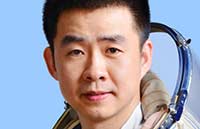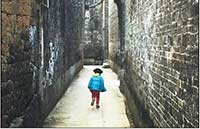Astronauts ready to kick off busy month in space
By ZHAO LEI (China Daily) Updated: 2016-10-19 07:09The Shenzhou XI manned spacecraft was scheduled to dock with the Tiangong II space lab in the early hours of Wednesday morning as astronauts start their busy, monthlong schedule, the space authority said.
After nearly two days of spaceflight, the Shenzhou XI will conduct a computer-controlled docking with the space lab. Then the two astronauts-49-year-old Jing Haipeng and 37-year-old Chen Dong-will enter the lab and start the longest space stay by Chinese astronauts, according to the China Manned Space Agency.
During their 30-day mission in Tiangong II, the astronauts will carry out scientific experiments and research, including medical ultrasound examinations, weightlessness effects on cardiovascular functions and cultivation of plants as well as in-orbit repair, said Wu Ping, deputy director and spokeswoman for the agency.
The space lab, which was launched in mid-September, carries 14 scientific and experimental payloads, such as the world's first high-sensitive gamma-ray burst detector, which was codeveloped by engineers from China and the European Space Agency, she added.
Huang Weifen, deputy research head at the Astronaut Center of China, said that compared with previous space journeys by Chinese astronauts, the Shenzhou XI-Tiangong II mission will be the busiest because scientists planned more than 40 experiments and trials for it.
She said that an in-orbit brain-computer interaction test will be performed during the mission, aiming to verify a futuristic technology that will allow astronauts to control equipment with their thoughts rather than manually. This will be the first such experiment in the world.
"We hope that the mind-control, eye-control and gesture recognition technologies will be applied in our manned space station," Huang said, referring to a permanent space station that China plans to start building in 2018 and put into service around 2022.
However, before the astronauts embark on their tasks, they must strive to overcome a host of difficulties, experts said.
"No matter how realistic the ground training, it is difficult to simulate the real state of weightlessness in space," said Wang Ya'nan, editor-in-chief of the Aerospace Knowledge magazine.
"For astronauts, they experience a certain period of fullness in the head after the spacecraft enters orbit. They must get used to the weightlessness as soon as possible."
- Shenzhou XI astronauts enter Tiangong II space lab
- Astronauts ready to kick off busy month in space
- Public gets look at heart of graft
- Chinese archaeologist refutes BBC report on Terracotta Warriors
- Permanent station plans ride on mission
- China jails officer in probe that led to execution of wrong man
- Record fund will expand to 100b yuan
- China establishes largest online data platform to store court cases
- Transplant surgeries could set record
- Duterte awaits 'soft landing' on first state visit to Beijing










